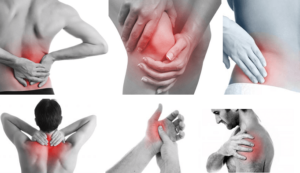 Red light therapy treatments are very effective at reducing pain and inflammation. They also speed up the healing process.
Red light therapy treatments are very effective at reducing pain and inflammation. They also speed up the healing process.
There are different types of red light therapy, such as those that use red or infrared light. Both are effective for pain relief and healing. The effect depends on the strength of the light, the length of time used and the type of tissue targeted (for example, skin or bone), among other factors.
Red light therapy technically only refers to light therapy using purely red light. However, many people also use this term to describe infrared light therapy. Both types appear to be effective for relieving pain and accelerating healing. Some studies show a slight advantage to using infrared light therapy, while others show red light therapy to be somewhat advantageous.
Red Light Therapy for Pain Relief
Many studies have established the red light therapy benefits (or of infrared or both). Some of them are discussed below.
The pain relief effects are temporary and last anywhere from a few hours to a day, while the healing effects can be more permanent (depending on the injury or condition). Since red light therapy can speed up healing time, you may achieve a higher level of pain relief for longer periods as your body heals.
Red light therapy can make an excellent addition to a pain management plan, provided your doctor approves. This makes it an ideal add-on treatment for many.
Many studies have shown the effectiveness of red light therapy for pain relief for everything from post-workout soreness to pain from orthodontics.
The U.S. Navy SEALs have reported that red light therapy treatments improved training-related injuries by 40% and that it decreased wound healing time among U.S. Navy submarine crew members.
Red light therapy has been used in diverse treatment scenarios, including to reduce mouth and throat pain from chemotherapy-induced ulcers in children. In a NASA-related study, red light therapy treatments were used to reduce the incidence of mouth ulcers in young cancer patients. These ulcers, in addition to being very painful, complicate treatment by making it difficult or impossible for the child to eat. For children who still got ulcers, red light therapy reduced their pain by 39-48%.
Curiously, red light therapy has been shown in at least one study to delay the onset of muscle fatigue, allowing study participants to lift 12 to 14.49% more weight.
Overall, it’s clear that red light therapy is useful for pain relief.